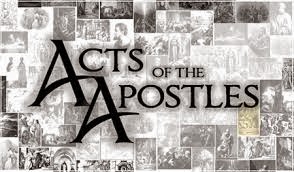Giorgione: Adoration of the
Shepherds, National Gallery, Washington.
Scholars
have expended more time dealing with the controversy that has surrounded the
attribution to Giorgione of the so-called “Allendale Adoration of the
Shepherds” than they have in trying to understand what is actually going on in
the painting. Here I would like to deal with the subject and meaning of this
famous Nativity scene that is now in Washington’s National Gallery.
The
subject of the painting seems so obvious. It is a depiction of the adoration of
the shepherds who have left their flocks to seek out the newborn Savior after
hearing the angel’s announcement.
Now when the angels had gone from them into heaven, the shepherds said to one another, “let us go to Bethlehem and see this thing that has happened which the Lord has made know to us..” So they hurried away and found Mary and Joseph, and the baby lying in a manger.
Luke’s
account of the angelic appearance to the shepherds is the traditional gospel at
the midnight Mass on Christmas . The actual arrival of the shepherds at the
stable in Bethlehem is the passage used for the gospel reading for the
Christmas Mass at dawn.
The
relatively small size of the painting indicates that it was done not as an
altarpiece but for private devotion. Although the subject is clear, there is a
deeper meaning.* Why is the infant Jesus lying on the rocky ground and not in a
manger or feeding trough? Why is he naked? Where are the swaddling clothes?
Actually
the newborn infant is lying on a white cloth that just happens to be on the
ends of Mary’s elaborate blue robe that the artist has taken great pains to
spread over the rocky ground. Giorgione is here using a theme employed earlier
by Giovanni Bellini and later by Titian in their famous Frari altarpieces. The
naked Christ is the Eucharist that lies on the stone altar at every Mass. The
altar is covered with a white cloth that in Rona Goffen’s words “recalls the
winding cloth, ritualized as the corporale,
the cloth spread on the altar to receive the Host of the Mass.” In Franciscan
spirituality Mary is regarded as the altar.
Clearly, the viewer-worshipper is meant to identify the Madonna with the altar and the Child with the Eucharist. Bellini's visual assertion of this symbolic equivalence is explained by a common Marian epithet. The Madonna is the "Altar of Heaven." the Ara Coeli, that contains the eucharistic body of Christ” Ave verum Corpus, natum de Maria Virgine.**
The
“Adoration of the Shepherds” represents the first Mass. This is not such an
unusual concept. Many years ago I attended a talk on the famous Portinari
altarpiece that now hangs in the Uffizi. The speaker was Fr. Maurice McNamee, a
Jesuit scholar, who argued that Hugo van der Goes had also illustrated a Mass
in that Netherlandish altarpiece around the year 1475. His argument centered on
the spectacular garments of the kneeling angels that he identified as altar
servers wearing vestments of the time. He called them “vested angels,” and they
are the subject of his 1998 study, “Vested Angels, Eucharistic Allusions in
Early Netherlandish Painting.”
His
Eucharistic interpretation explained the naked infant on the hard, rocky
ground. The infant Christ is the same as the sacrificial Christ on the Cross.
In a study of Mary in Botticelli’s art Alessandra Galizzi Kroegel referred to
this connection.
it needs to be pointed out first of all that the Renaissance era saw the spread of practices of individual devotion to be carried out primarily in the home…From the theological perspective attention should then be drawn to the emergence of a new trend that…tended to identify the mystery of the Incarnation with the Redemption itself, focusing on the Passion with much less fervour than in the past: whence the growing popularity of ‘incarnational’ iconographies celebrating the word made flesh, such as pictures of the Infant Jesus in his mother’s arms…while the demand for images with Christ on the Cross, very common in the fourteenth century was drastically reduced.***
It
would appear that Giorgione has used the same motif although his angels have
become little putti who hover around the scene. The shepherds represent
participants in the Mass who kneel in adoration.
There
are many other iconographical details in this painting that could be discussed.
Joseph’s gold robe indicates royal descent from the House of David. The ox and
ass in the cave are symbols of the old order that has been renewed with the
coming of Christ. So too would be the tree trunk next to the flourishing laurel
bush in the left foreground. The laurel is a traditional symbol of joy,
triumph, and resurrection.
Finally,
it has been noticed that Giorgione has moved the main characters off to the
right away from their traditional place in the center. Rather than diminishing
their importance this narrative device serves to make all the action flow from
left to right and culminate in the Holy Family. Giovanni Bellini had done the same thing in his “St. Francis
in the Desert,” and later Titian would use this device in his Pesaro altarpiece
in the Frari. ###
*Two recent catalogs have offered interpretations. See Mario
Lucco’s entry in Brown, David Alan, and Ferino-Pagden, Sylvia, Bellini,
Giorgione, Titian, and the Renaissance of Venetian Painting,
Washington, 2006. Also see the very strange interpretation of Wolfgang Eller in
Giorgione
Catalog Raisonne, Petersberg, 2007.
**Rona Goffen, Piety
and Patronage in Renaissance Venice,
Yale, 1986. P. 53.
***Alessandra Galizzi Kroegel, “The Figure of Mary in
Botticelli’s Art.” Botticelli: from Lorenzo the Magnificent to Savonarola,
2003. (ex. cat), p. 56.



















